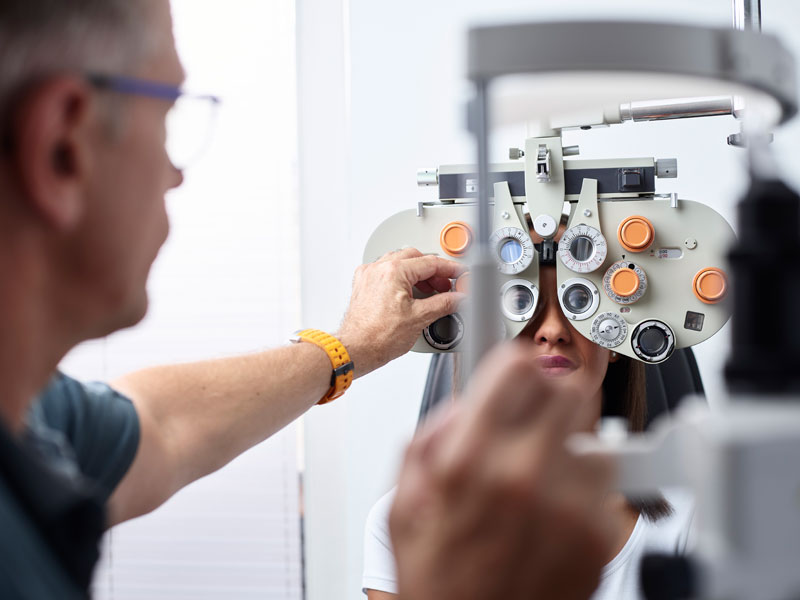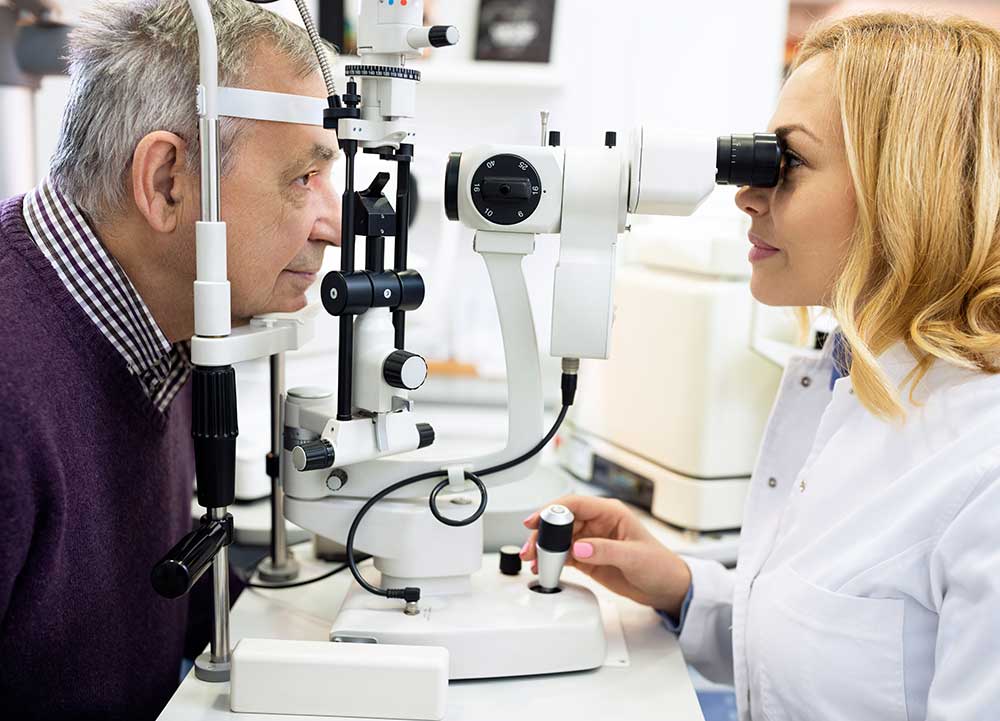Experience Personalized Care with Opticore Optometry in Chino
Experience Personalized Care with Opticore Optometry in Chino
Blog Article
Checking Out the current Technical Advancements in Optometry and What They Mean for Optometrists
From the precision of Optical Coherence Tomography to the nuanced understandings provided by AI-driven diagnostic tools, these advancements are setting brand-new standards in person assessment and therapy. As these innovations penetrate the method, optometrists are faced with the difficulty of accepting these devices to boost patient end results.
Advancements in Diagnostic Equipment
Advancing the area of optometry, developments in diagnostic tools have actually revolutionized the means eye treatment experts examine and diagnose visual impairments and eye conditions. The previous decade has experienced considerable technical innovations, enabling more exact and extensive analyses. Optical Comprehensibility Tomography (OCT), for example, supplies high-resolution cross-sectional pictures of the retina, permitting for the very early discovery of diseases such as glaucoma and age-related macular deterioration. This non-invasive imaging method has ended up being indispensable in modern optometric technique.
One more trick technology is the introduction of advanced corneal topography systems, which map the surface curvature of the cornea with precision. These tools are especially helpful for fitting contact lenses and diagnosing corneal conditions. Digital retinal imaging has changed typical ophthalmoscopy, supplying thorough, panoramic sights of the retina that facilitate complete visual exams.
The growth of wavefront aberrometry has also been vital, allowing the evaluation of refractive errors with unrivaled accuracy (Eye Doctor Optometrist). This technology aids in customizing corrective lenses and improving medical end results for refractive surgical treatments. Collectively, these analysis improvements empower optometrists to provide premium patient treatment, making certain very early intervention and tailored treatment methods, eventually enhancing aesthetic health and wellness results
AI in Individual Management
Structure on the structure of cutting-edge analysis devices, the incorporation of man-made intelligence (AI) in patient management represents a transformative leap for optometry. AI systems are progressively utilized to boost performance, precision, and personalization in patient treatment. By analyzing huge amounts of information, AI can determine patterns and predict prospective ocular problems, enabling eye doctors to tailor interventions a lot more successfully. This capacity is important in managing persistent eye illness such as glaucoma and diabetic person retinopathy, where early discovery and continuous tracking are crucial.
Moreover, AI-driven systems facilitate structured client interactions and administrative processes. Automated scheduling, virtual appointments, and customized follow-up plans not just boost patient contentment however additionally maximize time management for professionals. These systems can triage people based upon the seriousness of their conditions, making certain that those in critical demand receive punctual focus.
In addition, AI enhances decision-making by offering eye doctors with evidence-based suggestions and treatment paths. By incorporating information from digital health and wellness records, AI tools provide insights that educate scientific decisions, decreasing the risk of mistakes and enhancing individual outcomes. As AI remains to advance, its duty in patient administration will likely broaden, reshaping the landscape of optometric treatment.
Developments in Retinal Imaging
In the realm of optometry, retinal imaging has actually witnessed exceptional technical improvements that are enhancing diagnostic capacities and client care. Innovations such as Optical Coherence Tomography (OCT) and fundus photography have revolutionized how eye doctors visualize and evaluate the retina. OCT, particularly, offers high-resolution, cross-sectional photos of the retina, permitting the comprehensive evaluation of its useful reference layers. This ability is vital for very early discovery and administration of conditions like glaucoma, diabetic person retinopathy, and age-related macular deterioration.
Enhanced imaging methods like OCT angiography are further refining diagnostic accuracy. This non-invasive method maps blood circulation in the retina, supplying vital insights right into vascular health without the demand for color injections. Additionally, adaptive optics innovation is being incorporated right into retinal imaging systems to fix eye aberrations, delivering unprecedented image clearness. Such improvements help with the recognition of min retinal modifications that could signify illness progression.
Furthermore, developments in artificial intelligence are increasing retinal imaging by allowing automated evaluation of huge datasets. These systems assist optometrists in determining patterns a measure of pathology, thus improving analysis precision and performance. Jointly, these developments are transforming retinal imaging into a cornerstone of modern-day eye treatment, improving outcomes and expanding restorative opportunities.
Teleoptometry's Expanding Role
Teleoptometry is progressively ending up being a vital part of eye care, driven by improvements in digital interaction and analysis tools. This is especially advantageous in underserved and rural areas where accessibility to specialized eye care is often restricted.
The combination of expert system (AI) more boosts teleoptometry, making it possible for the analysis of aesthetic data and aiding in the discovery of ocular conditions such as glaucoma and diabetic retinopathy. AI-powered formulas can quickly interpret complex imaging data, offering eye doctors with important understandings that strengthen scientific decision-making.
Additionally, teleoptometry sustains connection of care through smooth combination with digital wellness records (EHRs), allowing optometrists to keep detailed person histories. When seeking advice from with different practitioners., this makes certain that people get consistent and personalized treatment even.
Despite these benefits, obstacles continue to be, consisting of ensuring information safety and security and taking care of individual expectations. Nonetheless, teleoptometry represents a considerable stride towards more accessible, effective, and patient-centered eye care. As innovation advances, its role is poised to expand better.

Future Trends in Eye Treatment
A myriad of ingenious patterns is readied to view it now reshape the future of eye treatment, driven by technical advancements and the developing needs of people. One significant fad is the assimilation of fabricated knowledge (AI) in diagnostics, which guarantees to enhance the accuracy and efficiency of eye evaluations. AI formulas can analyze vast quantities of information from retinal pictures, potentially spotting problems like diabetic person retinopathy and glaucoma earlier than conventional methods.
In addition, tailored medication is gaining grip in optometry, with genetic testing educating customized treatment strategies. This technique intends to maximize individual outcomes by customizing treatments to individual hereditary accounts. Wearable technology, such as smart contact lenses, is likewise on the horizon, supplying real-time tracking of intraocular stress or glucose degrees, thus giving constant understandings into systemic and ocular wellness.
The adoption of increased reality (AR) and digital truth (VIRTUAL REALITY) in training and patient education and learning is another emerging fad. These innovations supply immersive experiences that can enhance understanding and abilities both for people and optometrists. As these fads develop, eye doctors must stay abreast of technical developments to give advanced treatment, guaranteeing better client end results and complete satisfaction in the vibrant landscape of eye treatment.
Conclusion

Collectively, these diagnostic advancements empower eye doctors to provide remarkable client care, ensuring very early intervention and tailored therapy methods, eventually boosting aesthetic health and wellness results.

As these innovations proceed to evolve, optometrists need to adjust and include them into practice, eventually maximizing workflow efficiency and raising the requirement of eye treatment supplied to patients.
Report this page